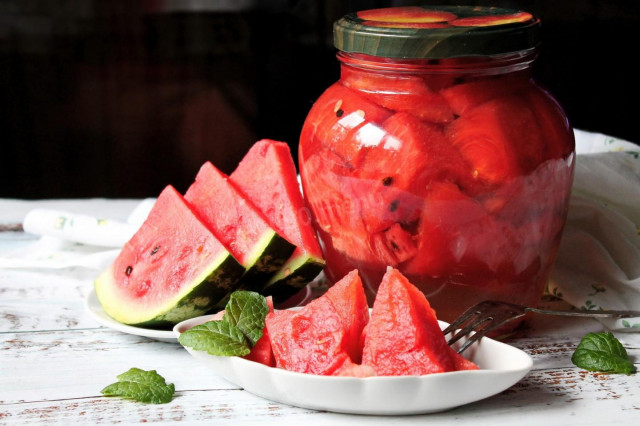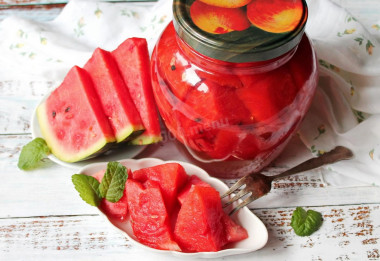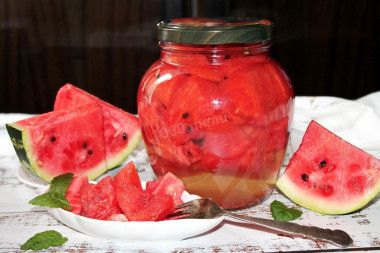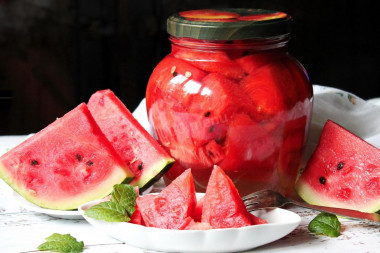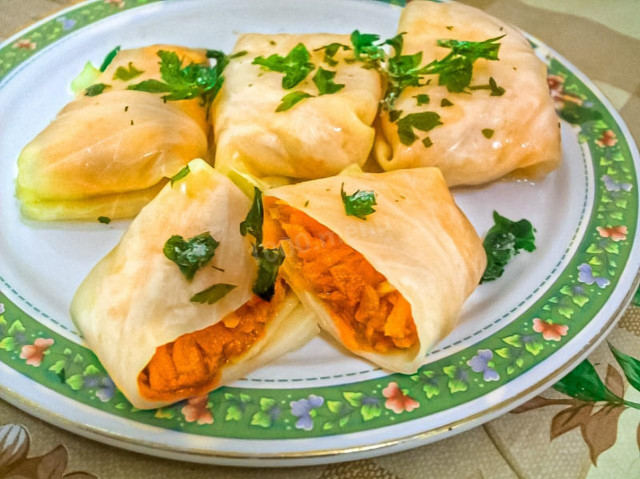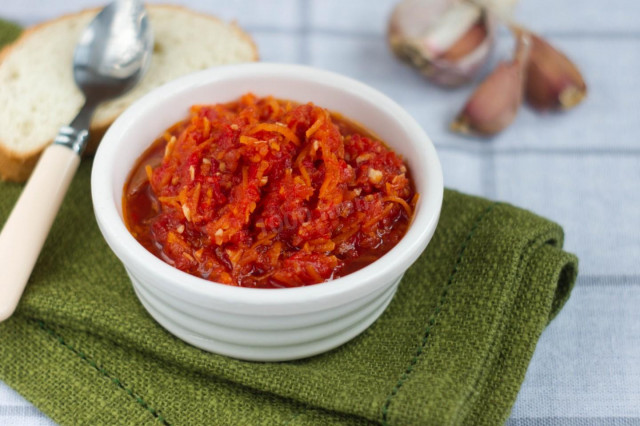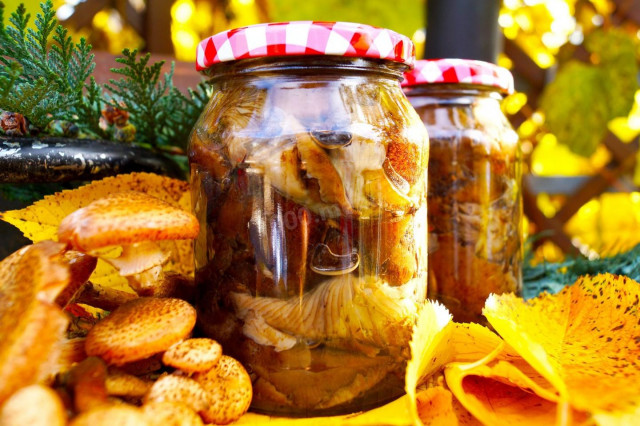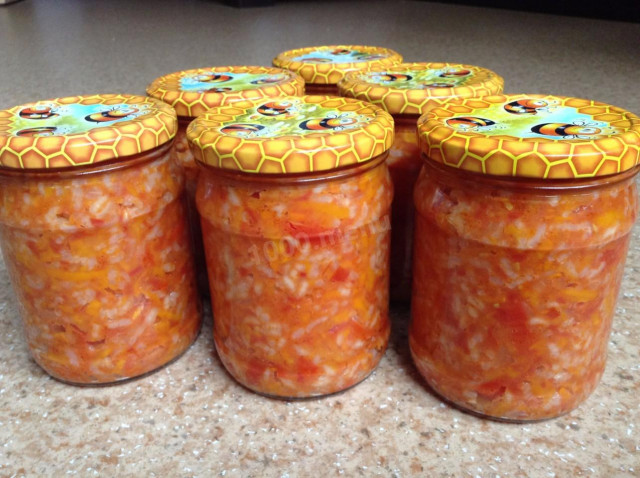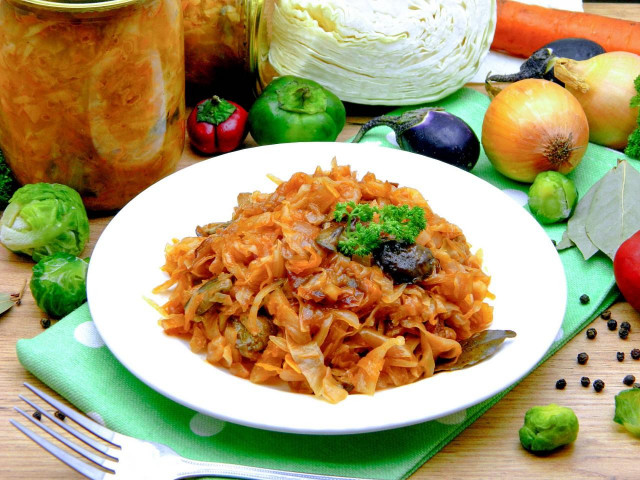Composition / ingredients
Step-by-step cooking
Step 1:
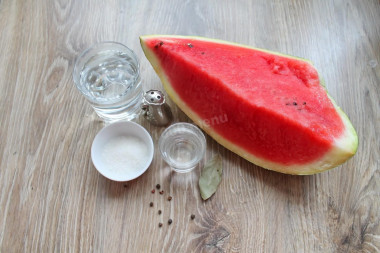
How to salt watermelons in jars without sterilization? Prepare all ingredients. It is best to do this in August, when the main ripening season of these berries begins. Then you can be sure that they have ripened without the use of chemistry. Choose watermelons that are not ripe, sweet and preferably with a minimum amount of grains. Watermelon, before cutting, be sure to wash thoroughly in warm water with soap and a washcloth, rinse.
Step 2:

First prepare the jars and lids for the blanks. Wash them with hot water and baking soda and rinse thoroughly. Pour water 2 centimeters high into clean jars, and put it in the microwave oven. Turn on full power and sterilize for 4 minutes. Or warm it over steam for 10 minutes.
Step 3:

Put the lids in a saucepan and cover with water, boil over medium heat for 10 minutes.
Step 4:
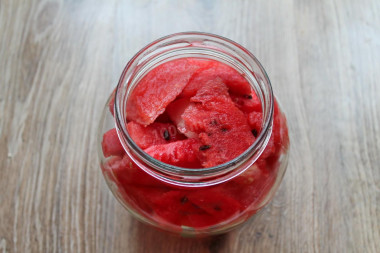
Cut the watermelon pulp from the crust, without touching the white part, and cut into medium pieces. They must be freely entered and removed from the jar. Place the watermelon pieces loosely in a sterilized jar.
Step 5:
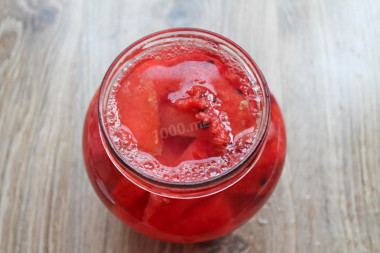
Boil the water and fill the jars with watermelons to the top. Cover with lids and let stand for 5 minutes.
Step 6:

Drain the broth into a saucepan.
Step 7:

Add sugar to the pan and stir. Sugar can be taken not only white, but also brown or cane sugar.
Step 8:

Add salt. It must be taken necessarily coarse ground and not iodized. Put on medium heat and bring to a boil. Simmer for 5 minutes over low heat.
Step 9:
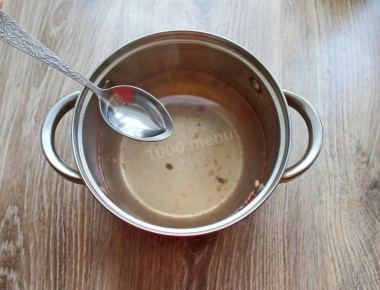
Pour vinegar into a saucepan and remove from heat.
Step 10:
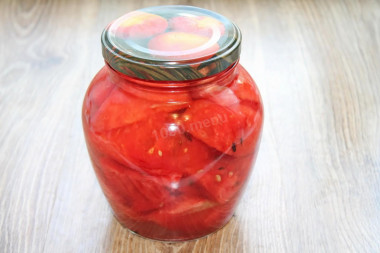
Immediately fill the jars with boiling marinade and carefully close the boiled lids.
Step 11:

Turn the jars upside down and wrap them in a warm blanket. Leave it like this until it cools down completely. After that, store it in a dry, cool and dark place. Ideally, it is a cellar or refrigerator. Before serving, the watermelon needs to be cooled.
Step 12:
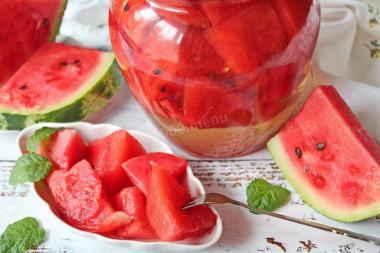
Bon appetit.
For cooking, it is better to use filtered or bottled water that is neutral to taste. If you use tap water, keep in mind that it can give the dish an unpleasant characteristic taste.
Remember that spices such as salt, sugar, as well as vinegar and its substitutes are used in recipes for winter preparations not only for taste, but primarily as preservatives. Therefore, in no case should you reduce the concentration of salt and sugar, and also replace vinegar (essence) with a weaker concentration than indicated in the recipe, otherwise vinegar (salt / sugar) will not show their preservative properties and the workpiece will be spoiled.
Caloric content of the products possible in the composition of the dish
- Bay leaf - 313 kcal/100g
- Watermelon - 25 kcal/100g
- Granulated sugar - 398 kcal/100g
- Sugar - 398 kcal/100g
- Wine vinegar (3%) - 9 kcal/100g
- Vinegar 9% - 11 kcal/100g
- Balsamic vinegar - 88 kcal/100g
- Apple vinegar - 14 kcal/100g
- Vinegar - 11 kcal/100g
- Black pepper peas - 255 kcal/100g
- Salt - 0 kcal/100g
- Water - 0 kcal/100g

